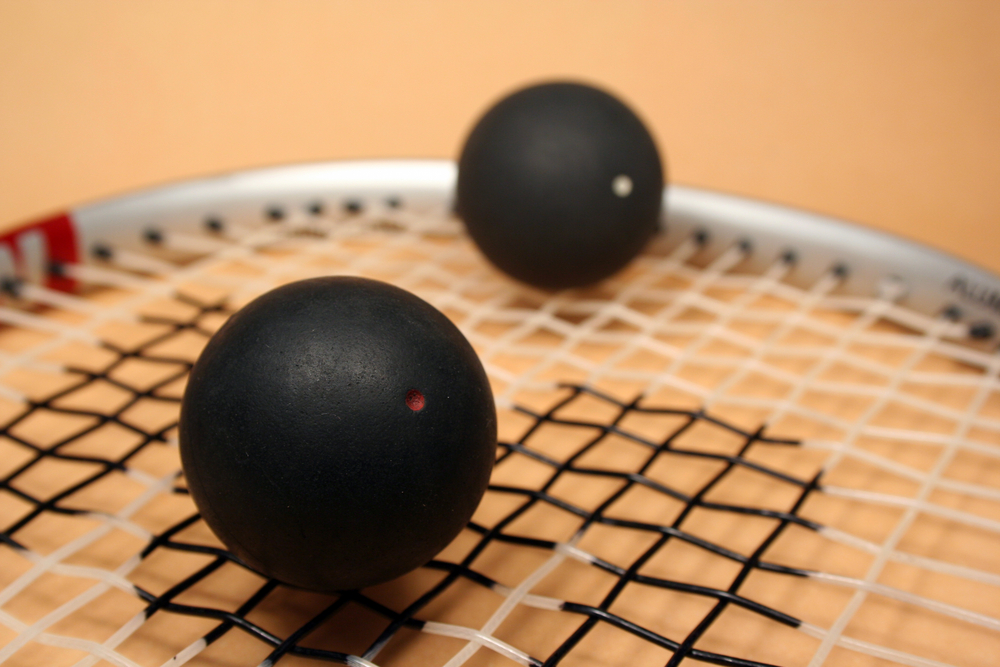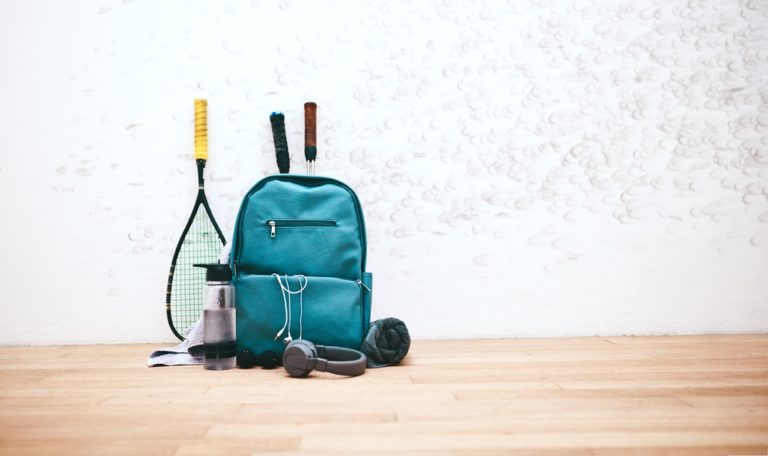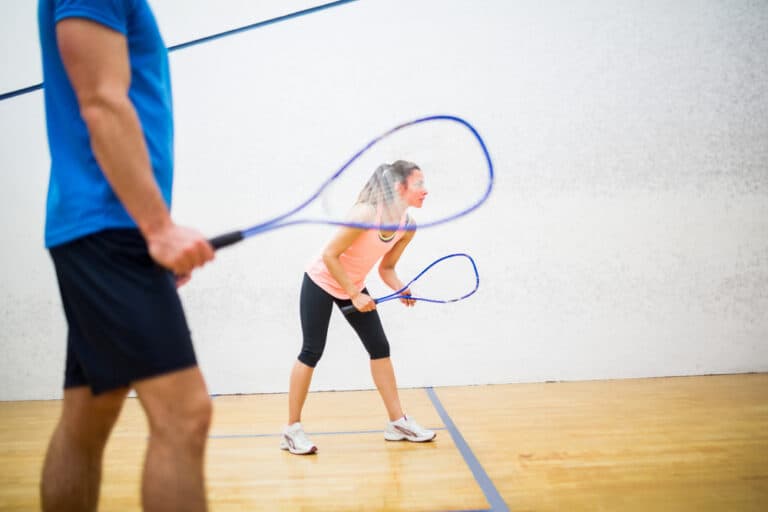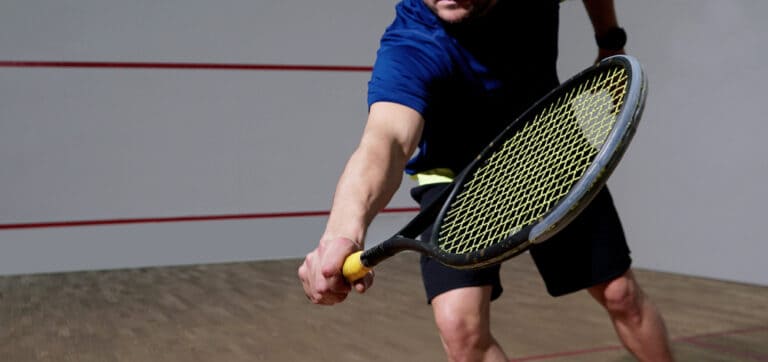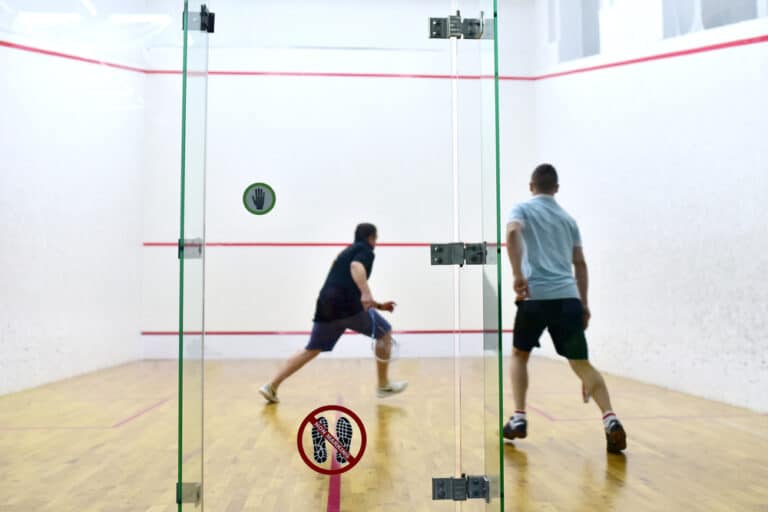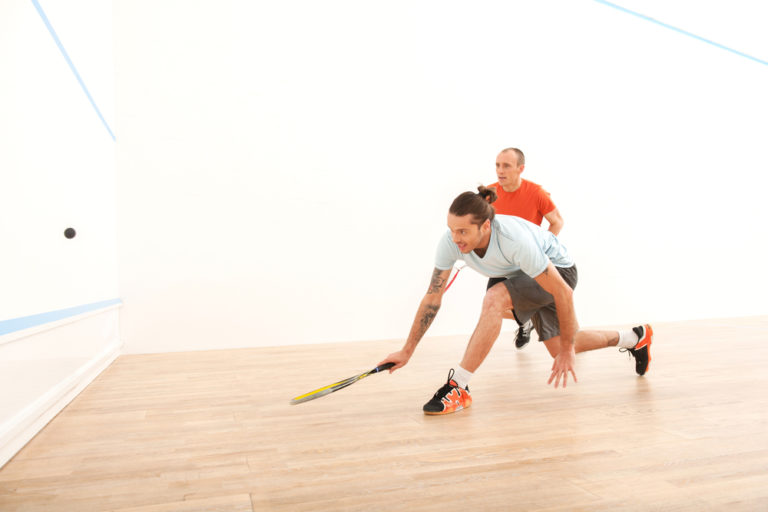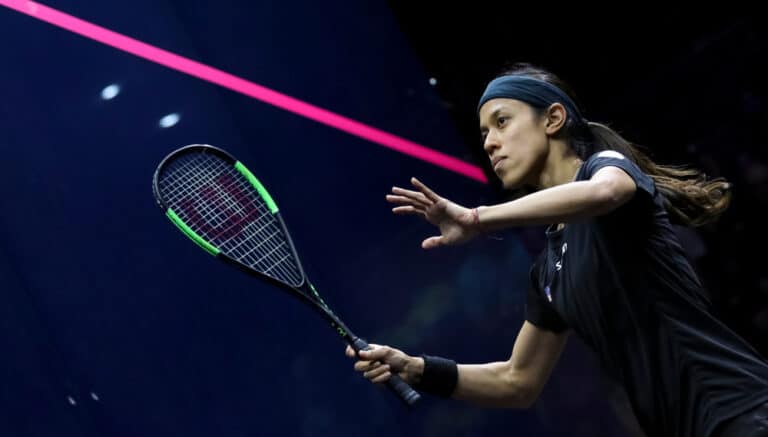What Are The Best Squash Balls?
The question of the best squash balls is slightly misleading as no one ball or brand is the best. Still, there is undoubtedly a range of higher-quality squash balls available in the market, and the choice of which you play with is based on your personal preference and experience.
The best squash balls are the ones that are best suited for your game and skill level. They are made from the best materials to deliver optimum playing results. Many premium brands like Dunlop, Head, Wilson, Tecnifibre, and Prince all produce high-quality squash balls for every game level.
In this article, we will take a more in-depth look at the different types of squash balls and which levels of the game they are best suited for as well as a list of Amazon’s top 10 best-selling squash balls, some of which you may already know or use, so let’s get on the court and get warmed up!
Why Are There Different Types Of Squash Balls
The game of squash, like most other games, has players with different skill levels, and the balls they use when playing are designed to match that level of play. It would be silly for a beginner to try and play with professional-level squash balls and vice versa.
Squash balls are rated and color-coded based on their speed and bounce, so a faster and higher bouncing ball would be for beginners, while a super-slow and low bouncing ball would be for professionals and other top-level players.
This differentiation in the playing characteristics of the squash balls is essential as it allows beginners, novices, and intermediate players to develop their fitness, flexibility, and stamina with a ball that will enable them to play the game without too much difficulty.
In some ways, the type of squash ball used is similar to that in golf, where players that have faster swing speeds and more power are better suited to one kind of golf ball, whereas players with slower swing speeds gain more benefit from golf balls that are designed to match that swing speed.
There are different types of squash balls because when played, the balls warm up due to the rubber surface conducting heat to the air inside the ball from friction and impact on the court. As the air inside them starts to warm up, they begin to exhibit the characteristics of their design.
So if you have a blue dot beginner’s ball and a yellow dot, you may find that when they are still cold, they play pretty similarly, but when warmed up to ‘game temperature,’ they start to behave differently in terms of bounce and speed.
Let’s look at the different types of squash balls, how they are rated and what color dot they are so you can determine which ball would be the best squash ball for you.
What The Different Dot Colors On Squash Balls Means
Squash balls are rated from beginner to professional. The color dots used on each one designates the speed and bounce of each, and this will subsequently determine which players should be using them.
Standard colors like blue, red, white, and yellow, but some other colors like single green dots are used in specific environments , like at high-altitude or in warmer climates where standard balls bounce too high.
Let’s look at the different squash balls, starting with the bounciest and fastest and moving to the lowest and slowest balls and one that is specially made for glass courts and TV!
The Single Blue Dot Squash Ball – The Beginner’s Ball
These balls have the highest speed and bounce and are used for beginners. Because they bounce so high, it is easy for entry-level players to use them and reach them before they bounce twice. Plus, they have more time to get into the proper position to play a technically correct shot, whether a forehand, backhand, or drop shot.
The higher bouncing blue single dot squash ball is the best option for people learning the game as it is a little larger than the single yellow dot and double yellow-dot balls, so it is easier to hit from the sweet spot on the racquet.
This is the largest squash ball available at 45mm or just 1,77” in diameter and is the best for beginners and novice players. Coaches will use this ball with beginners and professionals alike to develop technique and strategy at a slower pace before advancing to the faster-paced game.
The Single Dot Red Squash Ball – The Progress Ball
Slightly smaller than the blue-dot ball at 42.5mm or 1,67” in diameter, this ball is ideally suited for novice and intermediate players that have developed some level of skill and fitness but aren’t at the advanced level yet where they can play a slower ball.
Remember that in squash, the better and fitter you are, the slower and lower the ball will be for you. This will challenge your fitness, technique, stamina, and strategy during a recreational or competitive game.
The single red dot would be the best squash ball for players that have advanced beyond the beginner level but still need more bounce and more time to play their shots effectively and develop their fitness, stamina, and strategy.
The Single Dot Yellow Squash Ball-The Prime/Competition Ball
This is the advanced level ball and would be used by players with good fitness, stamina, and technique level. This ball is smaller than the red and blue dot balls, respectively, at 40mm or 1,57” in diameter.
You will have noticed that as we progress through the skill levels in squash, the balls get smaller, and there is just over a 10% difference in the ball diameter between the yellow dot and blue dot, as well as a bounce difference of around 40% respectively.
The single yellow dot squash ball is best for competitive league players that are not quite at the professional or very advanced levels of the game yet, and this is the most common and popular type of squash ball used worldwide.
The Double-Dot Yellow Squash Ball – The Pro Ball
This is the standard competitive ball used in professional and very advanced game levels. This is the slowest bouncing standard ball in the game, and while there are some slower ones used for more specialised environments, the double-yellow dot ball is the most commonly played at the top level.
This is also a 40mm diameter ball or 1,57,” and the double-dot is used to designate this ball as the default for pros and competitions.
These squash balls discussed above are the most common ones, but you get two other color dot balls with specific applications: the single-dot green ball and the single-dot white ball.
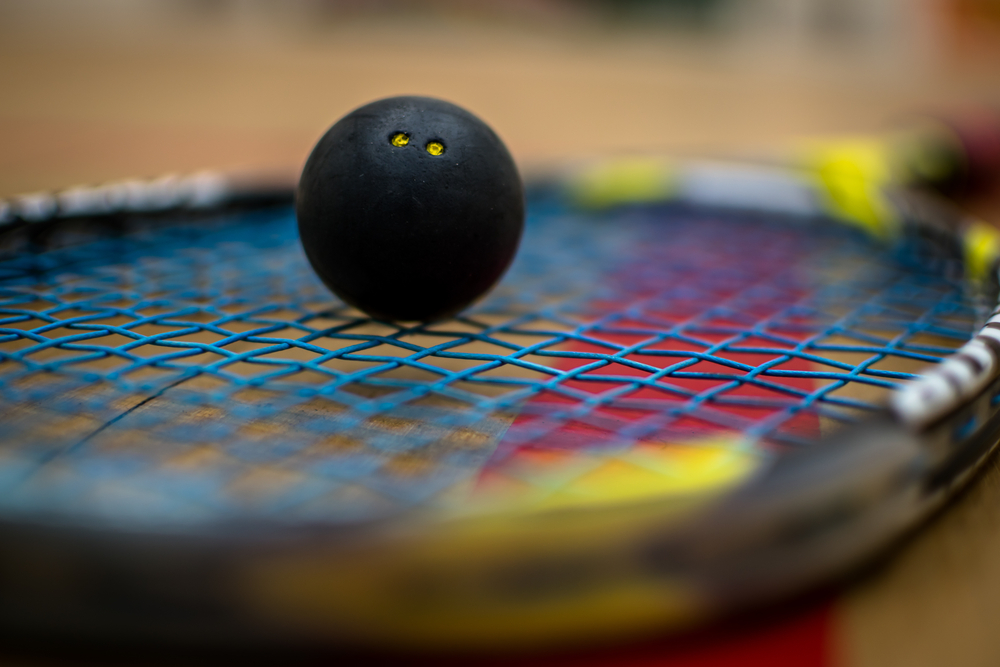
The Single-Dot Green Squash Ball
Usually, the double-dot yellow is the slowest ball, but this is not entirely accurate. The single-dot green ball is the slowest, and you would only find this where the games are being played at a higher altitude.
In cities like Mexico and Johannesburg, South Africa, which are much higher above sea level, the thinner air means that to maintain the same bounce level as the double-yellow dot ball, you need an even slower ball and that one is the single-green dot.
These are available, but unless you are playing at a higher altitude or in hot conditions that would cause the double-yellow ball to behave more like a single-yellow or even red dot ball, these single green-dot balls would not be used.
The Single-Dot White Ball
This is quite similar to the single-dot blue squash ball as it is also designed for beginners. It is a high-bouncing ball and is the best squash ball for beginners and children. This ball has about 40% more bounce than the prime ball and could be used along with the blue single-dot for adults starting the game
The White Show Squash Ball
When squash exploded in popularity in the late 70s and early 80s, sports broadcasters started to televise live squash events featuring the world’s best players, but they quickly became a problem.
To film this high-speed game, they needed glass courts and the double-yellow dot ball proved problematic for camera operators to see and follow with a camera, and for the players, as before that, most squash courts had three solid walls and only a glass back wall.
Most squash balls are black with their respective color dots displayed prominently, but these proved difficult to track and follow, so a ‘show court’ ball was created.
So, to combat the problem, the pure white ball was developed to allow both the players and the camera operators to follow it so that folks at home watching the game could follow the ball as it zipped around the court.
Now that we have looked at the various types of squash balls and which level of play they would be best for, let’s look at the top brands of squash balls as recognized by the Professional Squash Association (PSA) and then the top 10 best-selling squash balls on Amazon.
Which Are The Top Squash Ball Brands
In the USA and many other squash-playing countries worldwide, Dunlop is the top-selling squash ball brand and the official brand of the PSA. Dunlop has been working with rubber since the 1800s and is well known as a premier tire brand globally.
Their double-dot yellow ball is the top-selling competition ball in the world and has been for some time. Dunlop, on the whole, is the top-selling brand, but other brands are also well known and respected for producing top-quality squash balls.
The World Squash Federation (WSF) recognizes several other brands: Head, Prince, Wilson, Eye, Karakal, Victor, Tecnifibre, and Opfeel, and some other less well-known brands like Mr. Price (South Africa), Taiball, and Huashen.
Which of these squash balls are best for you? Well, the simplest way to discover which one works for you, is to buy one and play with it. Some players find that non-Dunlop balls offer more consistency and bounce, while others are steadfastly loyal to Dunlop.
Now, let’s look at the top 10 best-selling squash balls on Amazon.
What Are Amazon’s Best-Selling Squash Balls
As expected, Dunlop holds most of the top ten selling squash balls on Amazon, and those are the following with the ranking out of 10:
- Dunlop Pro XX Squash Ball
- Dunlop Sports Competition Ball – Single Dot Yellow
- Dunlop Pro XX (Dozen Pack)
- FANGCAN Single Blue Dot Training Squash Ball
- Dunlop Progress Squash Balls (Red Dot – Pack of Three)
- Dunlop Pro Double Yellow Squash Balls
- Vbestlife 37mm Single Dot Blue training squash balls
- Head Prime Squash Balls
- WILSON Staff Squash Balls
- Dunlop Hardball Squash Ball Series (Elite Singles and Elite Doubles)
The list above would not include Dunlop Pro XX balls in different pack sizes but instead looks at the other balls and brands on Amazon’s top-selling list.
What Are The Best Squash Balls For You
Now that you know the difference between the various color dots and the brand options you have available , all you need to do is start playing with the right color ball for your level of skill in the game. It’s essential to play with the right ball for your level, or you may get frustrated if the ball is too slow or fast.
Always warm up the ball and yourself before you play so you can get a proper idea of the ball’s performance under game conditions, and be aware that you may need a different kind of ball if you are playing at higher altitudes!
Conclusion
So, get a ball or a few balls, then get on the court and hit them as hard and as soft as you can and see which one feels and performs better, then ask some other players which balls they prefer and why, as well as your coach or local pro for their opinion.
Finding the best squash ball for you is often a process of trial and error, and don’t let the brand names persuade you, as there are some excellent quality balls available from brands you may never have heard of!

